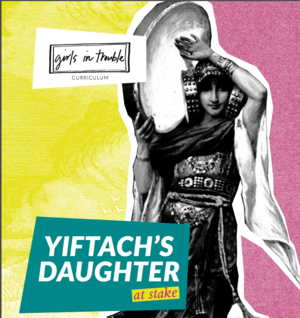Yiftach’s Daughter At Stake
This condensed version of the Girls in Trouble curriculum, a project by Alicia Jo Rabins, is based on Alicia’s art-pop song cycle of the same name, and follows individual women through their stories in the Torah. In each lesson, students are encouraged to engage with both the Torah text and Alicia’s songs, to consider the story’s relevance to their own lives, and to generate their own creative interpretations. This curriculum brings Biblical women to life, demonstrating the power of these often under-studied stories, and highlighting the ways in which they can help us navigate our own complicated lives.
Overview
Enduring Understandings
- Faith is a double-edged sword. It can be a powerful source of healing, meaning and beauty, but it can also blind us to the reality of the world around us, and even to the sanctity of human life.
- The story of Yiftach’s daughter can be read as a cautionary tale about the dangers of fundamentalism
- Creating art about women in Torah continues the millennia-old tradition of interpretation, while bringing female characters to the center of the process.
Essential Questions
- Why is Bat Yiftach’s story important?
- How can we work to reconcile the importance of faith and tradition with the necessity of critical thinking?
- How does Alicia’s song contribute to our understanding of Bat Yiftach’s story?
Notes to Teacher
We encourage you to make this curriculum your own. For instance, if there isn’t time during your class period to have students sketch out their own creative interpretations, you can either leave this part out or treat it as an extension activity.
We also encourage you to include as much hevruta (partner) study as possible. If you are new to hevruta study, you can think of it as discussion between two partners who can help each other learn by challenging each other’s first impressions. Breaking the group into pairs and having them read texts out loud, rather than silently, is an essential part of hevruta study.
Lastly, when studying the Torah text, we find it helpful to have students identify every problem, difficulty, or moment of confusion they can find in the text, as if they were on a scavenger hunt. This opens up the door to midrash, the Jewish tradition of creative Torah interpretation, which imagines answers to those questions.



